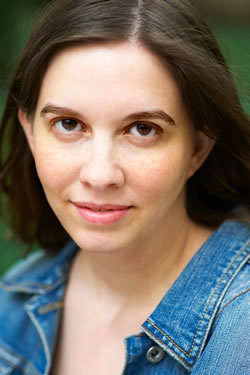|
More than any other art form, writing is the process of creating something from nothing. Dancers have the body; painters have the still life on the table. Writers, however, have nothing but their minds and a blank page.
When I first began work on The Last Animal, the writing came slowly. I knew I wanted to build a collection of stories. I knew the central theme: the connection between human beings and the natural world. Those first few pieces took me years to write. The octopus specialist. The ostrich farmer. The teenaged dog owner. I would pick them up and put them down every few months. I was fanatical, tinkering endlessly.
Over time, I realized that I had a default mode of storytelling. I believe this is true for many writers; instinctively, reflexively, they tend to enter any new story the same way. My own method was clear: female narrator, first person perspective. I went there automatically. It wasn't until I began writing The Last Animal that I questioned this approach—that I even became aware of it.
Now I began experimenting. Male narrators. Alternating narrators. I attempted the plural first person: a Greek chorus of united voices. Different points of view had different flavors, it seemed. The third person was, by nature, energetic, while the first person could be solid and contemplative.
It turned out that I had a default mode when it came to the story's tense, as well. I preferred the past tense, with its reflectiveness and insight. And yet the present tense—all cinematic urgency—had a completely different feel. A balance was necessary. Too many stories in the past tense would bog down the collection; too many in the present tense left the whole thing feeling weightless.
I did not stop there. My thinking was changing all the time. Yes, the gender of the characters was a factor, but so was their age. I wanted the full range: young and old, both experienced and naive. Many temperaments. Many dispositions. Setting, too, was more important than I had originally thought. Part of this had to do with The Last Animal's central theme. My goal was to explore the myriad ways that human beings connect to and find solace in nature. The best way to do this was to go wide. Men, women, and children. Ostriches and blue whales. Deserts, rain forests, and oceans. I wanted the collection to be strewn across the face of the world.
Soon I found that I was approaching new stories in an entirely different way. The process of creation now began with a laundry list. I would think about what was lacking elsewhere. A male narrator, to balance the plethora of female voices. An elderly character. The third person, since the first person was threatening, as always, to take over the whole show. The present tense, for a change. An icy climate, for once.
In the past, I had always generated a new story from the inside out. I would begin with the germ of an idea—a shining sentence, an image—that would grow and grow outward from that initial seed, unfurling like a tree. This, however, was something else. I was now building the story from the outside in. I was constructing houses: starting with the foundation, the walls and plumbing.
And it was working. Each story revealed more about what the collection as a whole still needed. Each house had to make sense next to the houses beside it, within the context of the greater neighborhood. As the landscape took shape, the writing got faster. I was no longer spending years on individual pieces.
The final story to join the collection arrived in a single, finished draft. I knew, beforehand, so much about what I wanted. The character's age and gender. His climate, his home. I knew how I wanted the piece itself to feel: third person, present tense, brisk and light. With such a clear structure, filling in the interior was easy. I erected the walls and popped on the roof—and the main character moved in overnight, with his story packed into a suitcase, fully-formed. He shut the door behind him and settled in, as though he had been living there for years.
|


